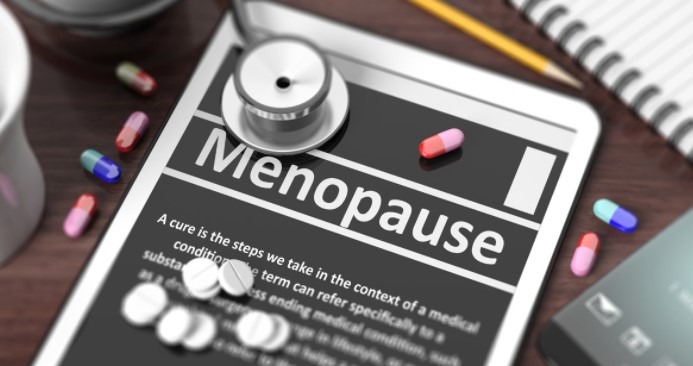What is early menopause?
Early menopause refers to the cessation of the period due to ovarian dysfunction before the age of 45, while when it occurs before the age of 40 it is characterized as primary ovarian insufficiency (POI). The incidence of POI is estimated at 1% in women under the age of 40.
Types of ovarian insufficiency
There are 2 types of ovarian failure:
1. Primary ovarian failure: when menstrual cycles never begin in a young girl. This happens when the ovaries are absent or not functioning. Although it is rare, the main causes are:
- Congenital absence of the ovaries.
- Chromosomal abnormalities (eg Turner syndrome).
- Disorders related to the synthesis of hormones related to egg production.
- Autoimmune disorders.
2. Secondary ovarian failure (premature menopause) occurs when a woman previously had normal menstrual cycle with normal ovarian function, but periods stop before the age of 40.
What are the symptoms of premature menopause?
The clinical picture of POI is similar to that of natural menopause. Thus, the women have menstrual disorders and later cessation of their cycles, whilst at the same time they experience menopausal symptoms:
- Change in their cycle’s frequency. Irregular periods or repeated episodes of delay or cessation of the period.
- Change in the amount of blood during the period. More or less than usual in the blood flow during the period.
- Hot flashes. Sudden feeling of heat spreading to the body and head.
Additional symptoms that may occur over time:
- Vaginal dryness and dyspareuni (pain during sexual intercourse)
- Mild urinary incontinence.
- Mood changes: Irritability, mood swings and signs of depression.
- Low libido.
What are the causes of premature menopause?
The majority of women diagnosed with POI had normal puberty and had regular cycles initially and no obvious cause could be found. Regarding the aetiology of POI, it may be due to the following reasons:
- Genetic abnormalities
- Toxic agents
- Previous chemotherapy
- Radiotherapy of the pelvis
- Inflammatory infections such as mumps or antibodies that destroy the ovaries.
- Autoimmune disorders where the body’s immune system turns against the eggs.
- Hysterectomy (surgery to remove the uterus). Even if the ovaries are not removed, the period ceases earlier than the average age at which menopause begins.
- Ovarian surgeries such as cyst removal, especially endometriosis.
- History of premature menopause in the family (mother and sisters) without identifying a specific cause.
How is early menopause diagnosed?
Early diagnosis of POI is very important, because it can prevent osteoporosis and cardiovascular disease, which are the result of the lack of oestrogens.
- Gynecological examination and transvaginal ultrasound.
The thickness of the endometrium indicates the hormonal production by the ovaries.
- FSH (Follicle Stimulating Hormone).
Elevated FSH is the most sensitive indicator for the diagnosis of premature menopause. FSH stimulates the follicle production in the ovaries. A decrease of oestrogen levels, subsequently causes an increase of FSH. In women with increased FSH levels, a second test should be done 4-6 weeks later for confirmation.
- Measurement of AMH (Anti Mullerian Hormone).
It is produced by the follicles located in the ovaries. Low follicular count leads to low AMH levels. Its measurement is an indicator of ovarian reserve, therefore fertility in some cases.
- Thyroid function tests and prolactin levels:
Thyroid hormone disorders and elevated prolactin can cause ovarian dysfunction.
Treatment of early menopause
The basic treatment for POI is hormonal treatment (estrogen and progestogen) in order to restore a woman’s cycle, and it should be given to all women, regardless of whether they have children or menopausal symptoms. The duration of treatment is until about the age of 50, when the period is expected to stop normally.
Can I get pregnant when I have been diagnosed with POI?
The possibility of having children in women with POI is limited. A small percentage of women (up to 5%) can have children without medical intervention, however the only definite solution for women with POI, who wish to have children, is in vitro fertilization with an egg donor.



